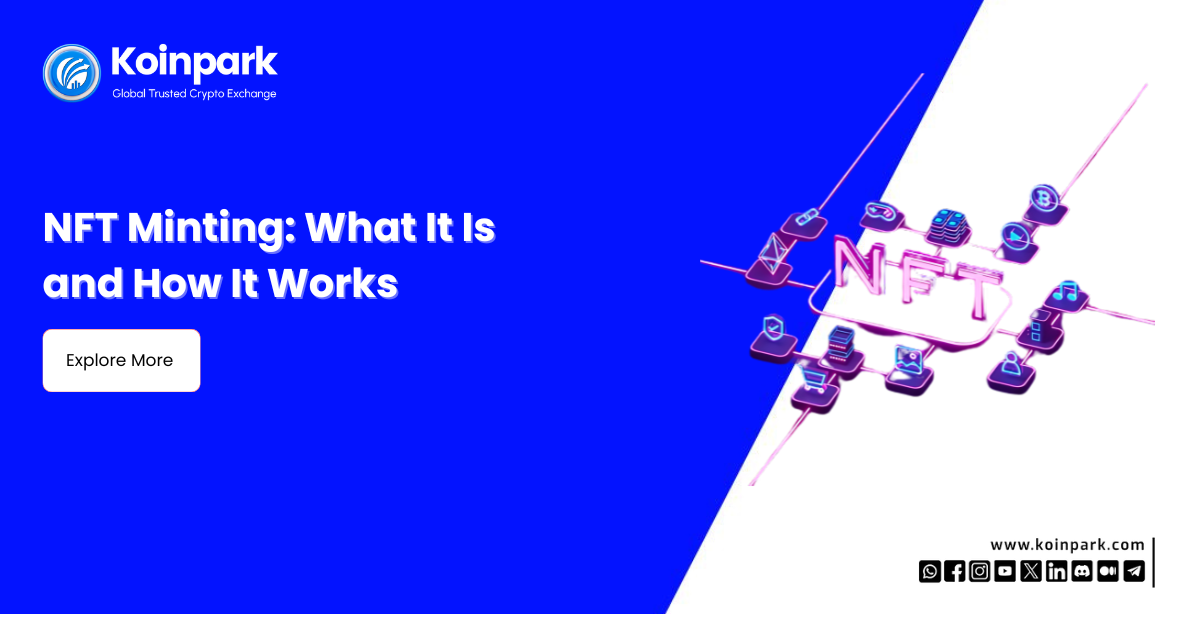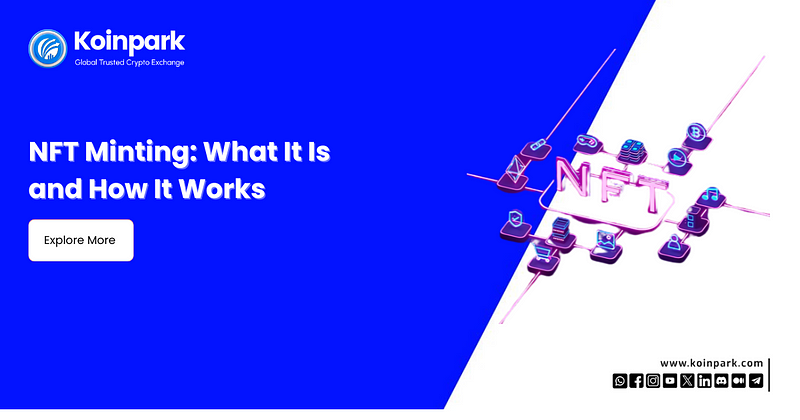Introduction
If you’re an investor looking to buy some NFTs or a creator wanting to sell your artwork, you’ll come across the term “NFT minting.” In this article, you will learn what NFT minting is.
What is NFT Minting?
Creating and storing an NFT on the blockchain is known as minting it. But what does that really mean? With an example, let’s dissect it.
Example of NFT Minting
Suppose we want to mint an NFT of an image. Minting an NFT of this image means creating a token that stores information about the image.
Think of this token as a text file that contains various details. Here are the three key pieces of information stored on the token:
- Current Owner Wallet Address: Who currently owns the NFT?
- Link to the Image File: Where the image is stored online.
- Link to a Metadata File: This includes information like the title of the image, the artist, a description of the image, and the date it was created.
Storage of the Image
It’s important to know that the image itself is not stored on the blockchain. Instead, the token contains a link to where the image is stored on a server elsewhere.
The token, however, is stored on the blockchain, meaning it is kept on numerous computers simultaneously. This makes it extremely difficult, if not impossible, to edit or delete any piece of information without the owner’s permission.
Types of Digital Files for NFTs
You can mint an NFT for any digital file, such as images, audio files, videos, 3D models, and text files. Once the digital file is uploaded to the internet, you can create an NFT with a link to that uploaded file.
Blockchains for Minting NFTs
NFTs can be minted on various blockchains, including Ethereum, Solana, Cardano, Tezos, and Flow. Currently, Ethereum is the most popular and widely used blockchain for NFTs.
However, like any transaction on a blockchain, minting NFTs requires paying transaction fees. Minting NFTs on the Ethereum blockchain can be quite expensive, with gas fees sometimes reaching $100 or $150 to mint a single NFT.
What Happens When You Mint an NFT?
Role of Smart Contracts
Minting an NFT is done using smart contracts. Smart contracts are lines of code that execute transactions automatically. These smart contracts create the tokens and update the owner information when the NFT is sold.
Using Marketplaces
You don’t need to write smart contracts yourself to create an NFT. Marketplaces like OpenSea, Rarible, and Mintable have their own smart contracts and will mint the NFT for you.
Lazy Minting
If you don’t want to pay the gas fees upfront before selling your NFT, you can list your NFTs for sale for free on Rarible and Mintable. This process is called lazy minting.
Here’s how it works: You upload your images, and they are stored and listed on the marketplace. However, the token is not created until a buyer purchases your NFT, at which point the buyer pays the gas fee to mint the NFT on the blockchain.
OpenSea’s Minting Process
OpenSea requires you to pay the gas fee for the first mint only. After that, you can list an unlimited number of NFTs for free.
This is also a form of lazy minting, where the tokens are created on the blockchain when a buyer purchases the NFTs.
Public Minting
How Public Minting Works
Popular NFT collections often allow buyers to mint their NFTs directly from the project’s website. The buyer goes to the project’s website, connects their wallet, and clicks on the mint button.
After paying the gas fees, the smart contract automatically mints a randomly chosen NFT for the buyer. This is called a public mint.
Risks of Public Minting
Buying NFTs through public minting can be risky. Sometimes, buyers may visit a fake website that looks identical to the original one.
When they click mint, they might receive a fake NFT or nothing at all. To avoid this, ensure you are on the correct website by checking the project’s official social media profiles.
Gas Fees and Transaction Failures
Gas fees during public mints can be very high. If you try to mint an NFT and pay the gas fee, but the transaction fails because all the NFTs were minted or because you paid a small gas fee, you will lose the gas fee and not get the NFT. Thus, before making decisions, it’s imperative that you conduct your own research.
Integrating Cryptocurrency Knowledge
When dealing with NFTs, it’s important to understand the broader cryptocurrency ecosystem.
Knowing how to navigate a Global Cryptocurrency Exchange can be crucial. For instance, learning “How to buy Bitcoin in India” and understanding the conversion rates such as “BTC to INR” or “USDT to INR” can help you manage your investments better.
Token Listings and Best Ways to Buy Crypto
Keeping an eye on “Token Listing” updates on different exchanges can offer new opportunities.
For those new to the space, exploring the “Best way to buy Crypto” can provide valuable insights. If you’re just starting, knowing “How to buy your first Bitcoin” is a fundamental step.
Conclusion
Minting NFTs involves creating a digital token that stores information about a digital file and placing it on the blockchain.
This process can be done on various blockchains, with Ethereum being the most popular. While minting can be costly due to transaction fees, marketplaces offer solutions like lazy minting to mitigate upfront c
However, always exercise caution, especially during public mints, to avoid scams and failed transactions. Additionally, understanding key cryptocurrency concepts and exchanges can enhance your experience in the NFT and crypto world.






Comments